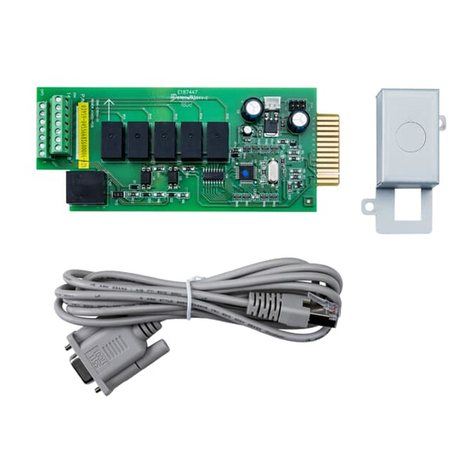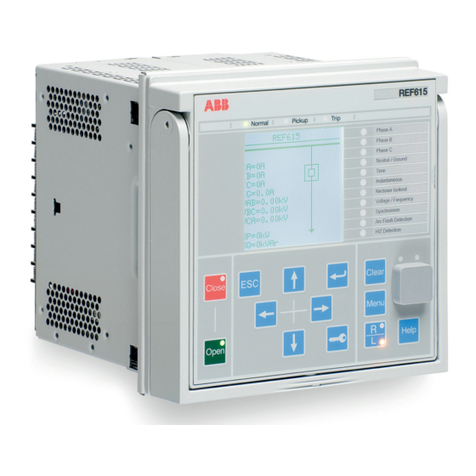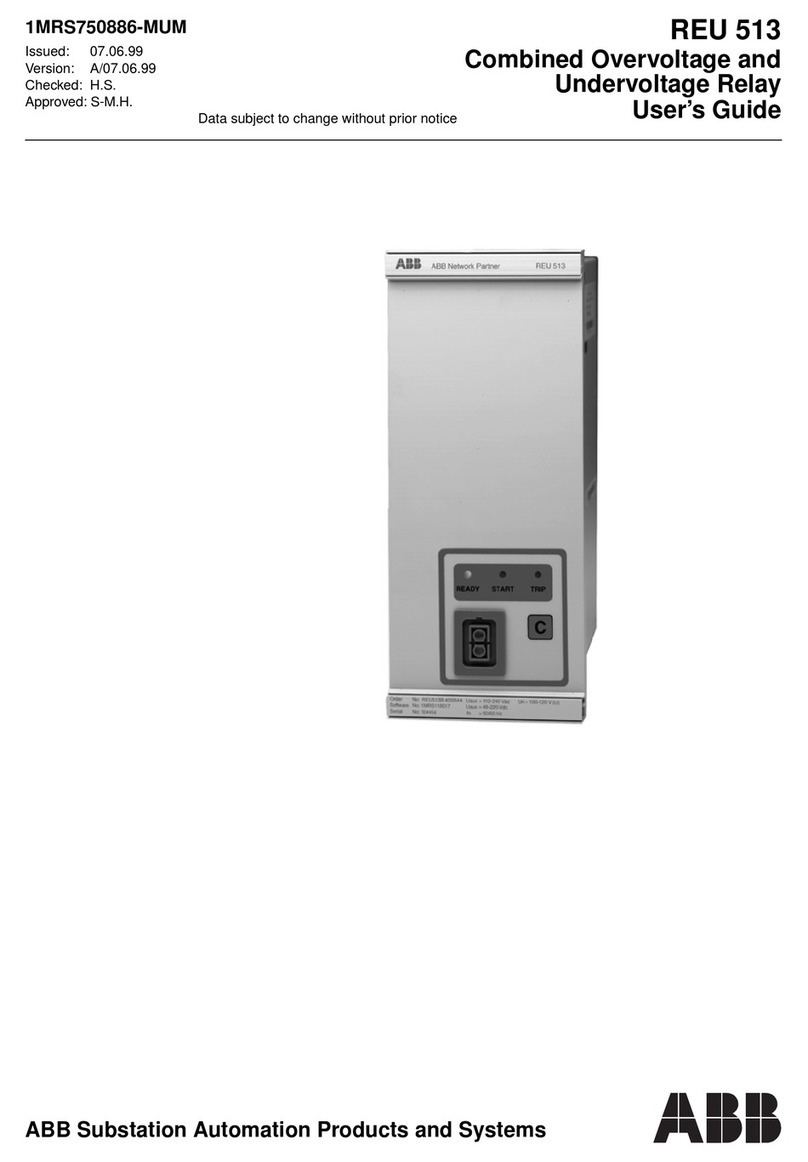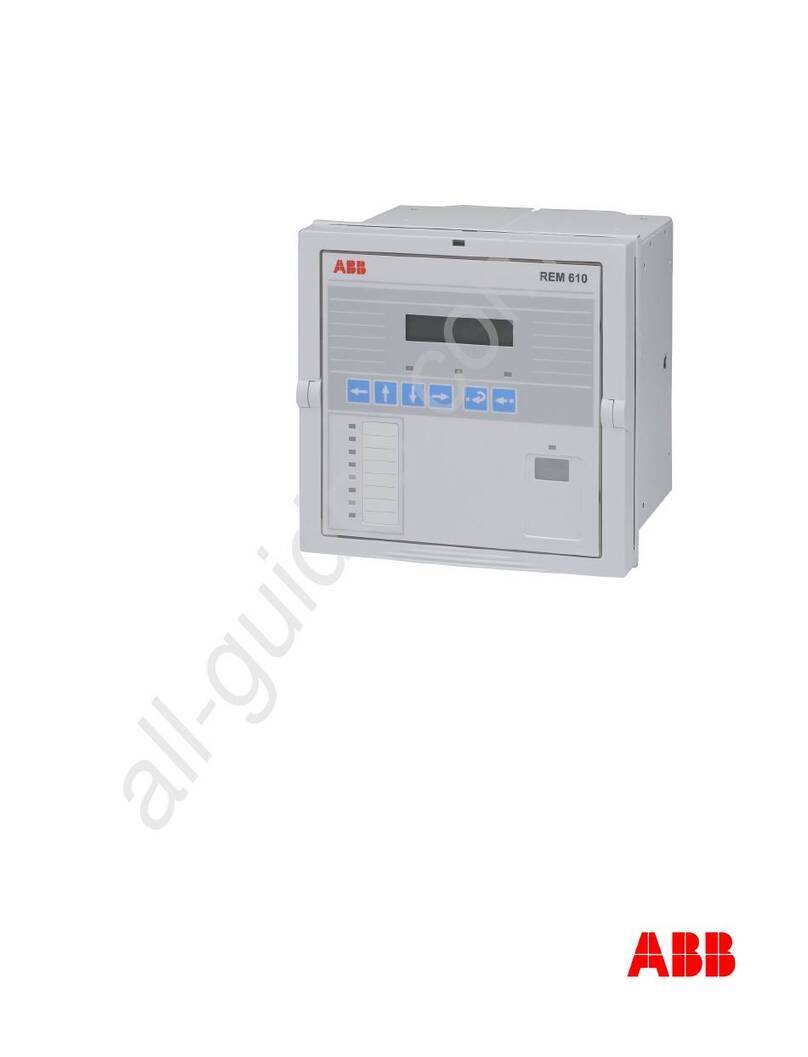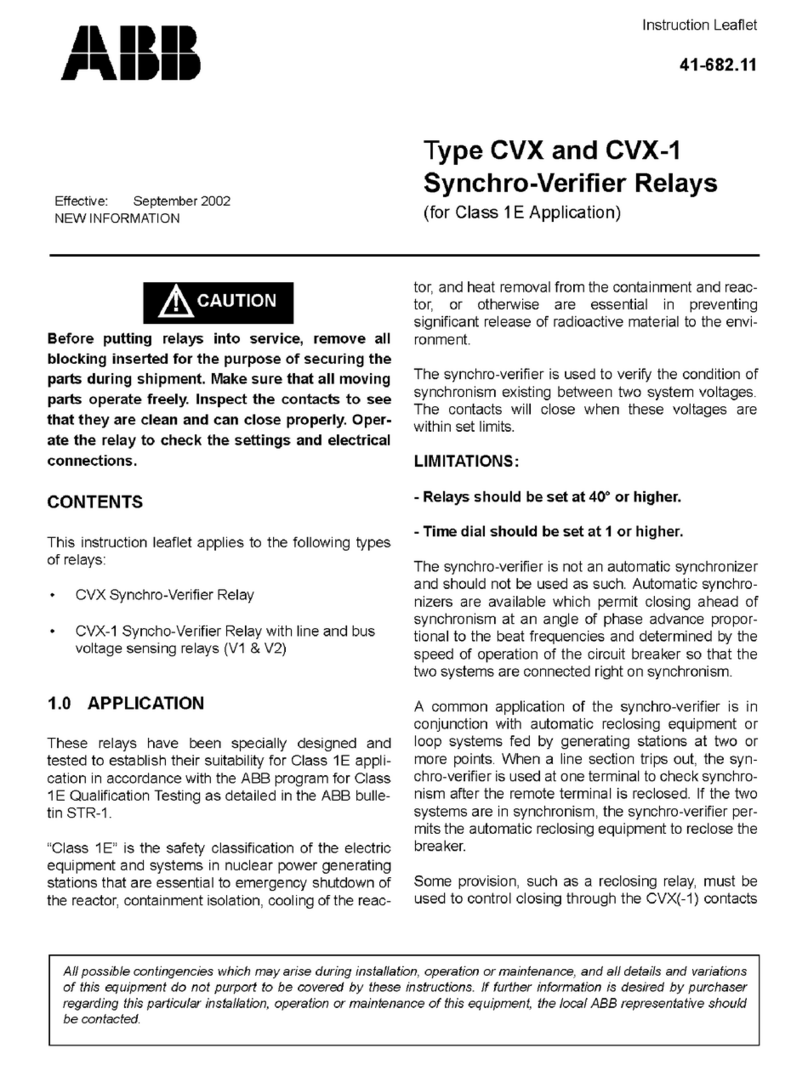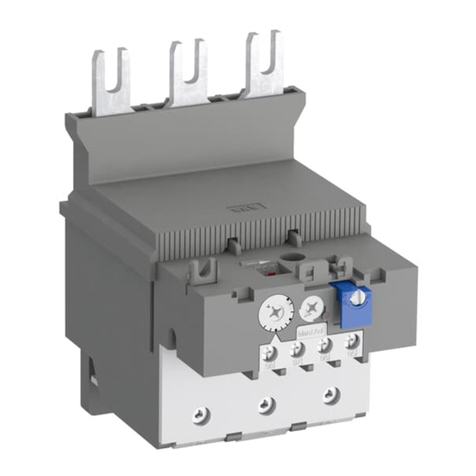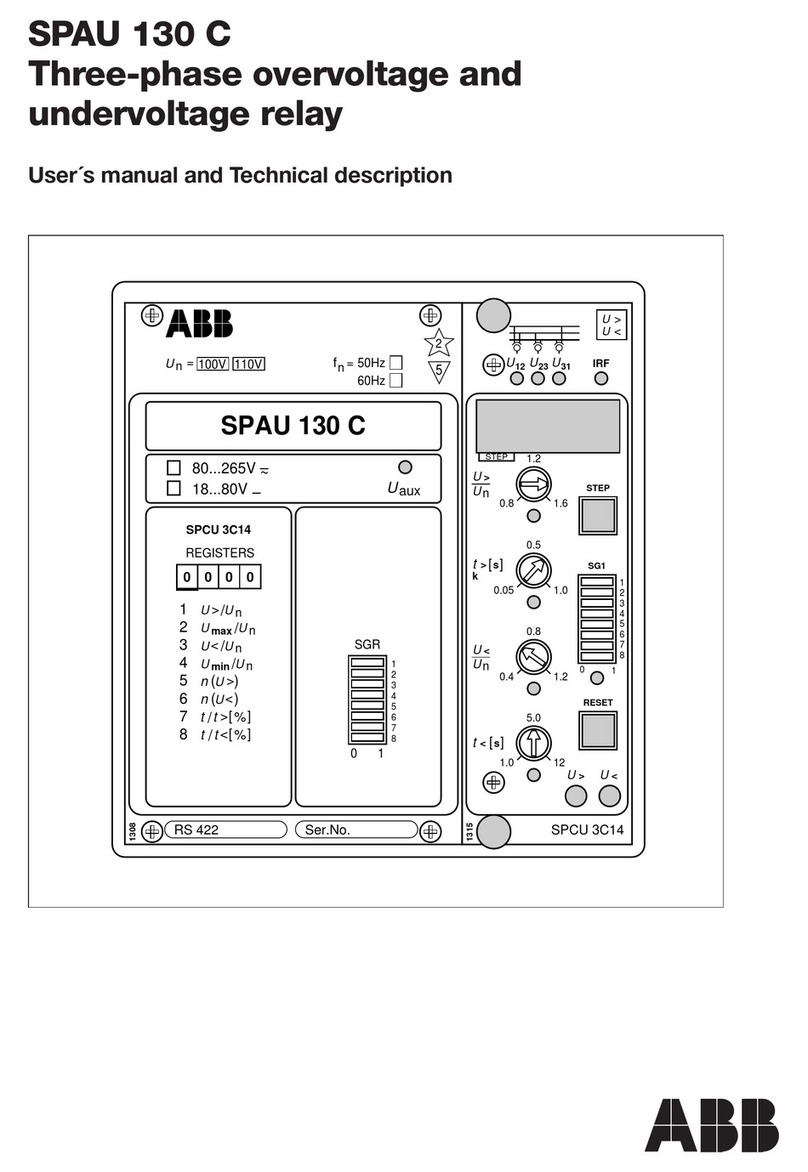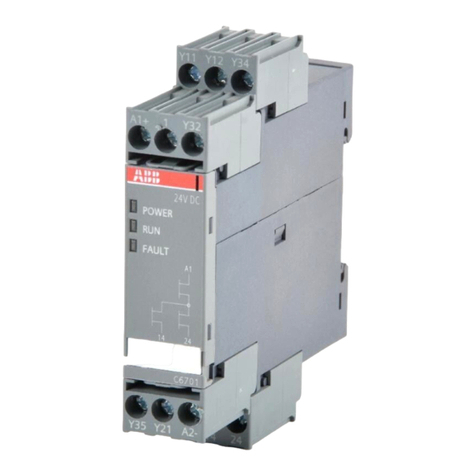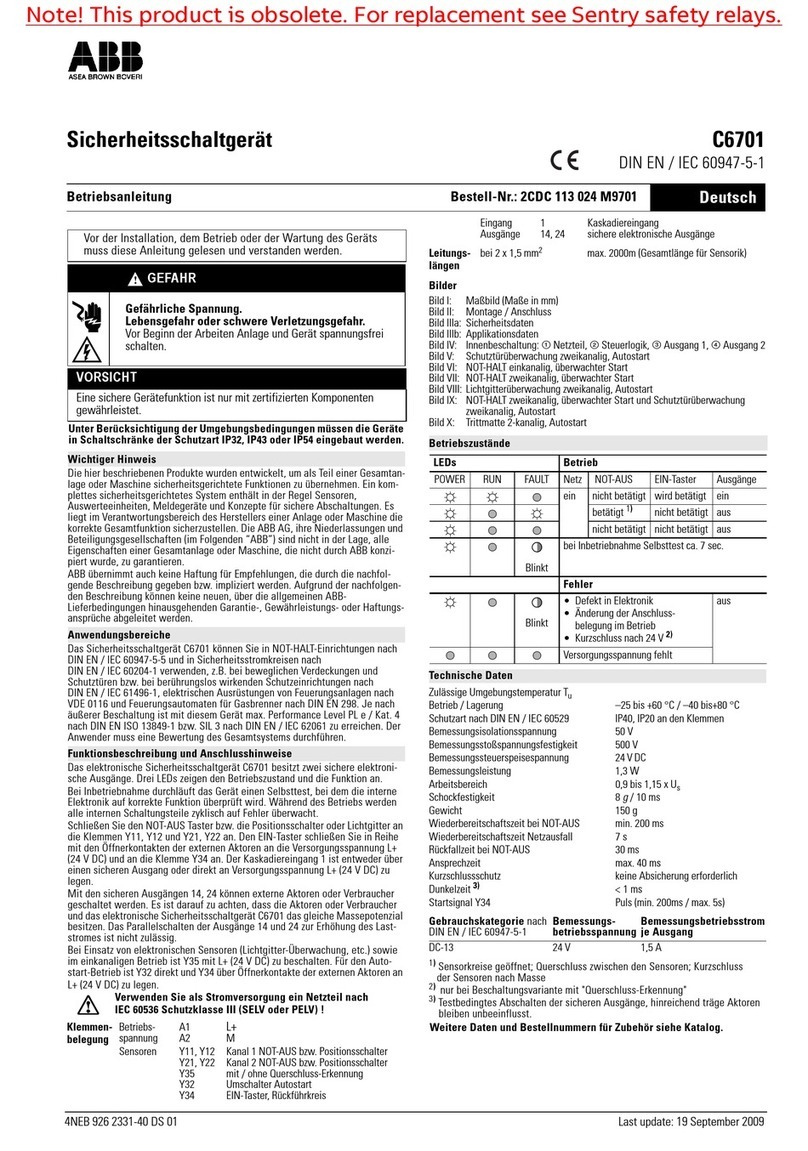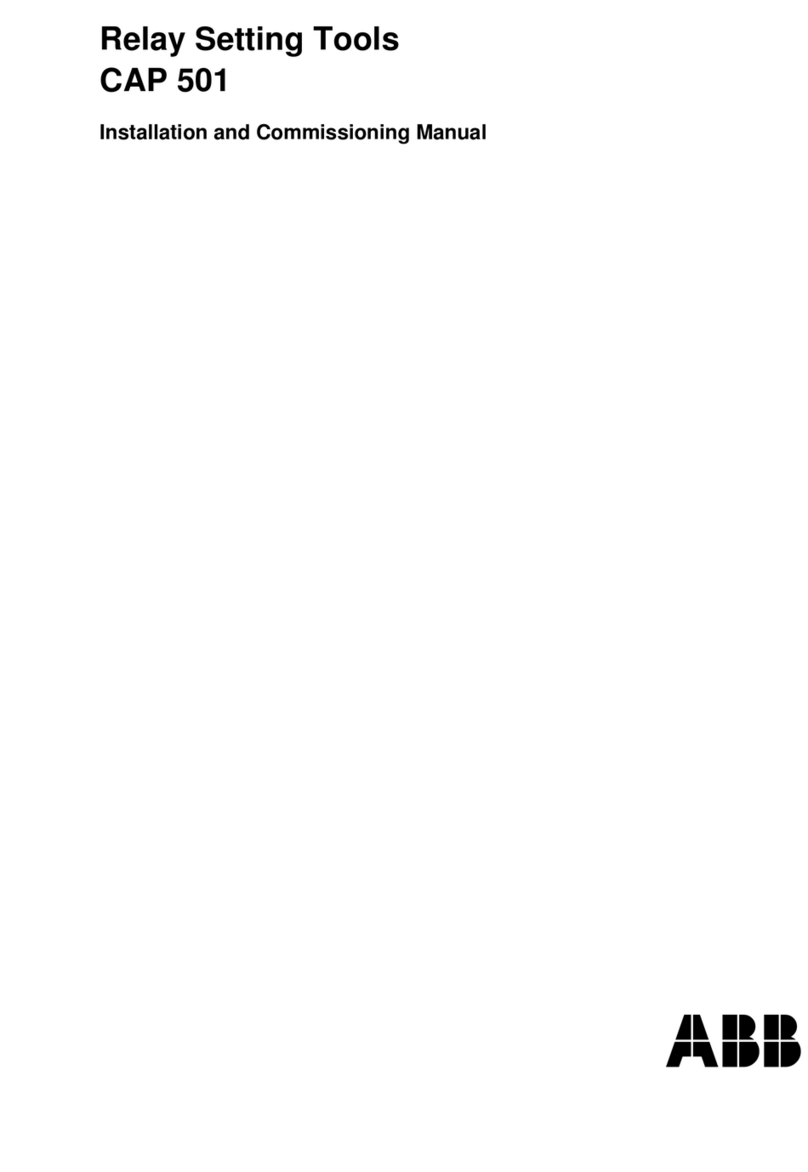
Type MG-6 Multi-Contact Auxiliary Relay 41-753.1M
9
7.3. MOVING CONTACT FINGERS
When a moving contact finger has been removed
from its guide pin and is to be reassembled, the coil
springs on either side of the finger must be replaced
correctly. Select the stronger spring and place it on
the closing side of the contact finger. The stronger
spring can be selected by placing the two springs on
a flat surface and compressing them. Pick the stron-
ger of the two.
7.4. CONTACTS
7.4.1. Contact Follow
The follow of the moving contact fingers should be
3/32” for the make contacts and 1/16” for the break
contacts, measured at the contacts. This can be
checked more conveniently by measuring the travel of
the lower edge of the armature after the contacts
touch. This should be approximately 1/8” for themake
contacts and 3/32” for the break contacts. In case
moving contact fingers have been removed from their
guide pins, it is important that the coil springs on the
two sides of the fingers be replaced correctly. The
springs which are compressed by circuit-closing con-
tacts are approximately three times as strong as the
ones compressed by circuit-opening contacts and
thus they can be readily distinguished. The positions
of the two springs are reversed at the two ends of the
relay.
7.4.2. Special Purpose Contacts
When special contacts have been supplied for
make-before-break applications, all corresponding
stationary contacts must be bent equally toward their
respective moving contact to obtain “make” at the
point where the “break” moving contact has approxi-
mately a 1/16 inch follow before parting from its sta-
tionary contact.
7.4.3. Cutoff Contact
If the relay is provided with a coil interrupting contact,
the following points must be observed to assure sat-
isfactory operation. With the relay in its normal oper-
ating position and the armature shifted to the extreme
right, align the armature “snap” spring so that it is at
least 1/64 inch in from the right-hand edge of the mov-
ing contact spring. With an .030 inch gap between the
armature and the lower pole face of the electromag-
net, adjust the bracket by means of the adjusting
screw, until the snap spring just passes the roller. The
latch screw should be adjusted so that with the arma-
ture in the latched position and the operating coil
deenergized, the gap between the armature and the
lower pole face of the electromagnet is .010 to .015
inch. With the armature in this position the coil inter-
rupting contact should be open at least 3/64 inch.
7.4.4. Contact Cleaning
All contacts should be periodically cleaned. A contact
burnisher Style # 182A836H01 is recommended for
this purpose. The use of abrasive material for clean-
ing contacts is not recommended, because of the
danger of embedding small particles in the face of the
soft silver and therefore impairing the contact.
7.5. LATCH ASSEMBLIES
On latching type relays the latch screw is adjusted so
that with the armature latched and the operating coil
de-energized, there will be a gap of 0.020 ±0.005
inches between the electromagnet pole face and the
raised section of the armature striking the pole face.
Following this adjustment, tighten the locking screw
securely.
There is a small amount of clearance between the ar-
mature and its supporting posts, and in order to insure
proper operation, allowance must be made for this in
the following manner. With the armature held against
its left-hand support and nearly closed, the latch
spring or reset armature should be moved to the left
as far as it will go by means of the hand reset. To as-
sure that the latch will always release the armature
the resulting space between the latch and the latch
screw should be at least .010 inch, and should not be
more than about 1/64”. This should also be checked
electrically if electrical reset is provided. Some
change of this gap can be made by loosening the
mounting screws in the relay base and moving the
latch support in the desired direction. The gap also
can be changed by loosening the two screws which
hold the moving contact insulation block to the arma-
ture and shifting the armature in the desired direction.
On electrical reset relays, the tension of the spring
which draws the reset armature toward the latch
screw must be adjusted if these parts are being reas-
Courtesy of NationalSwitchgear.com


